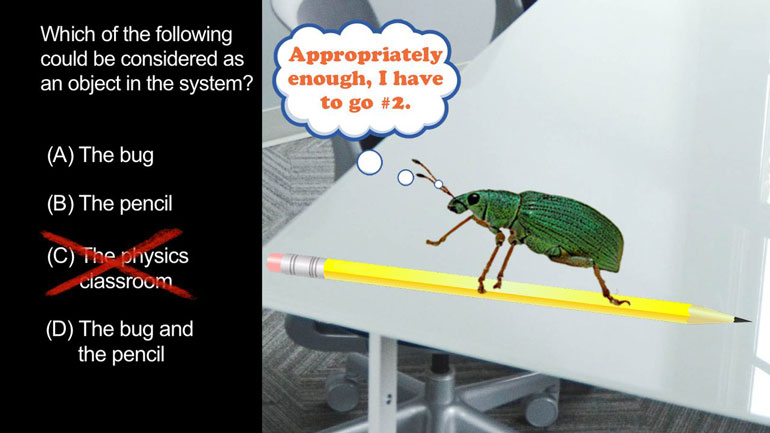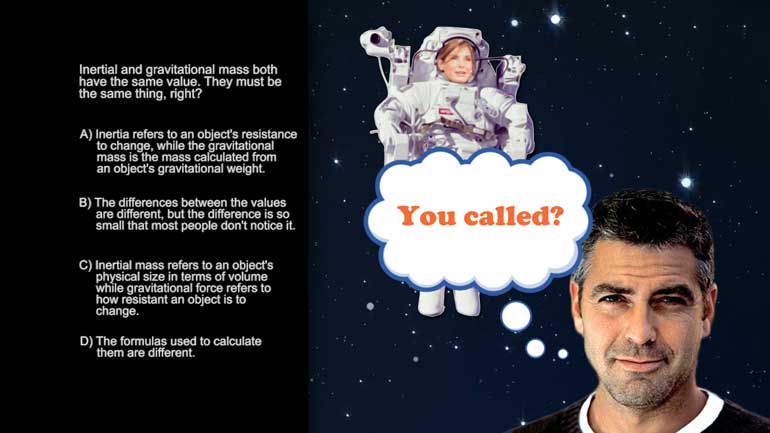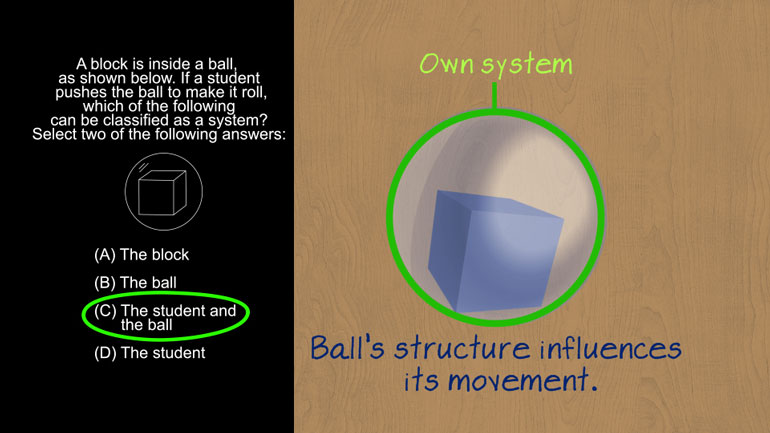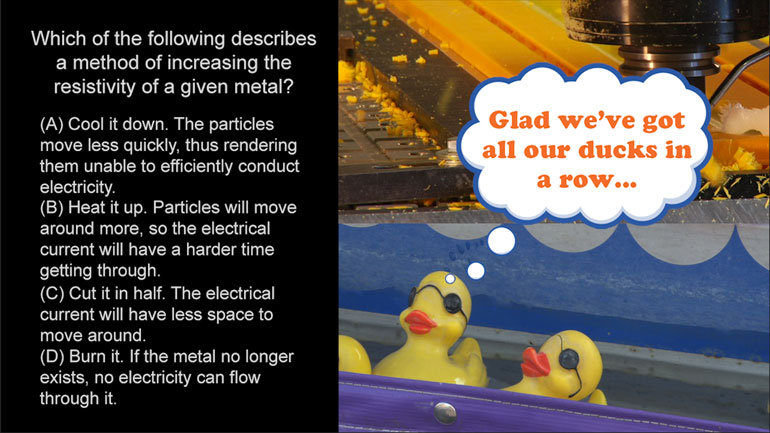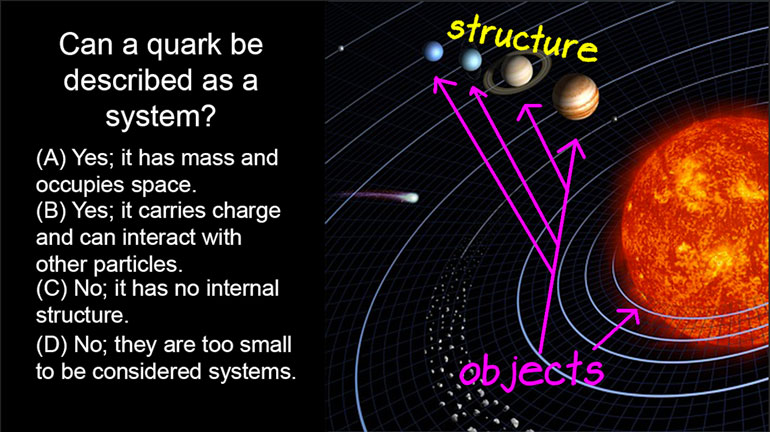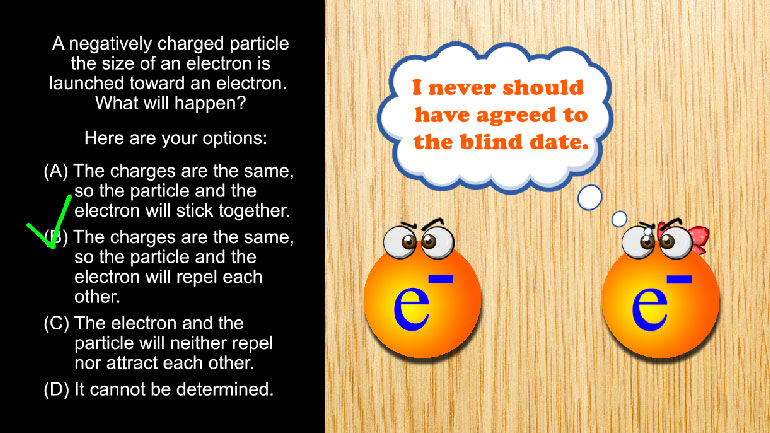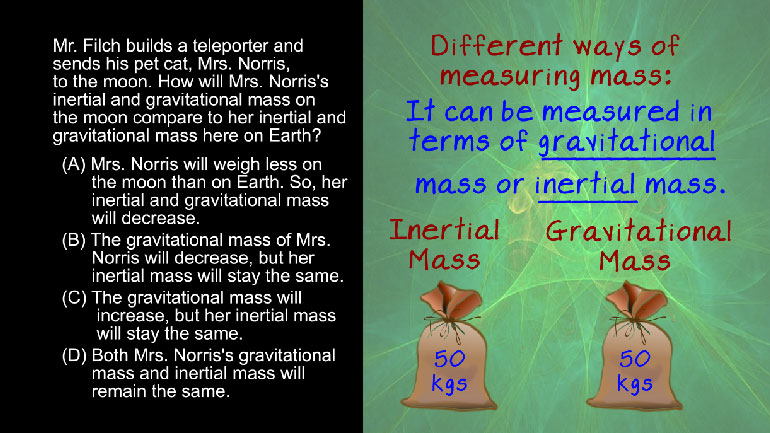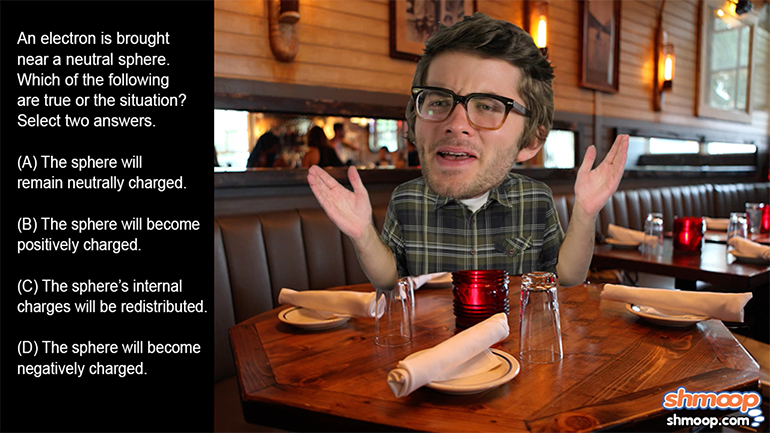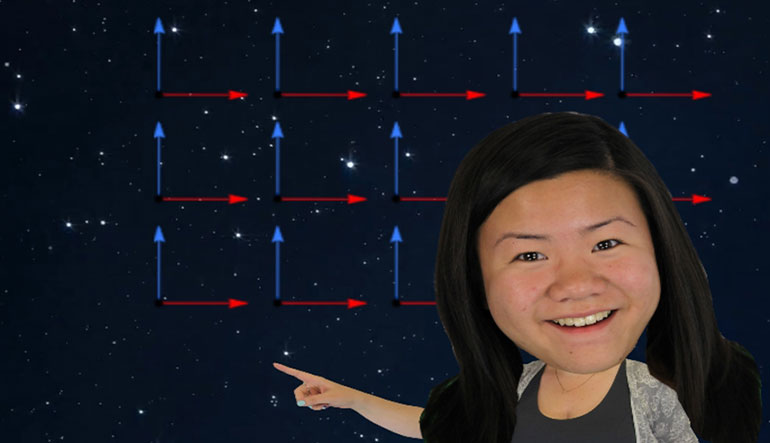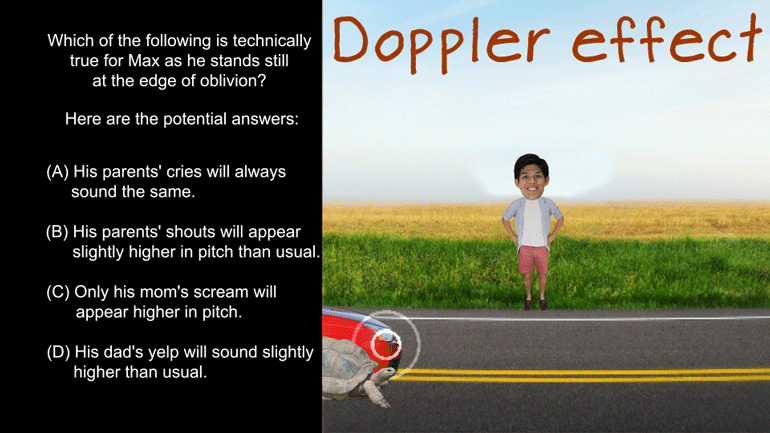ShmoopTube
Where Monty Python meets your 10th grade teacher.
Search Thousands of Shmoop Videos
Playlist AP® Physics 1: Properties of Objects and Systems 13 videos
AP Physics 1: Properties of Objects and Systems Drill 1, Problem 1. Which of the following could be considered as an object in the system?
AP Physics 1: 1.4 Properties of Objects and Systems. What is the difference between inertial and gravitational mass?
AP Physics 1: 1.5 Properties of Objects and Systems. Which of the following can be classified as a system?
AP Physics 1: 3.1 Properties of Objects and Systems 180 Views
Share It!
Description:
We hope you'll be vector ious in answering this shmoopy question about vectors!
Transcript
- 00:00
Sorry And here's your smoke to shore Brought to you
- 00:04
by vector diagrams Yes What you thought was just doodling
- 00:08
is now part of advanced physics Congrats baby All right
- 00:13
check the falling diagram this thing here like you grandpas
- 00:19
given these vector fields of equal magnitude in which direction
Full Transcript
- 00:23
will the resulting vector field go And here the potential
- 00:27
answers that way Vector field Before we jump into this
- 00:32
let's take another look at our vector field diagram this
- 00:36
puppy right here Well there are five vertical vectors and
- 00:39
three horizontal doctors say one for five and a one
- 00:42
two three But notice that the question states the vector
- 00:45
fields have the same magnitude So it's important that we
- 00:48
don't get thrown off by the number of lines we
- 00:50
see They're just representative of a plane If we know
- 00:55
we're dealing with two vector fields of equal magnitude going
- 00:58
in different directions How do we figure out the net
- 01:01
Vector field Well we have to add the vectors do
- 01:05
that We take one vector from each field and place
- 01:08
them tip to tail Then we connect the ends to
- 01:11
find the net factor like this Well that means our
- 01:15
option d is the correct answer Now this question the
- 01:18
answer is pretty straight forward once we know how to
- 01:20
put the vectors together After all we're just drawing a
- 01:23
line to make a right triangle But if the diagrams
- 01:25
aren't is straight and need is this one or if
- 01:28
we just can't visualize what it's supposed to look like
- 01:31
Well we can sketch you draw the line ourselves to
- 01:33
make it clear That's right We may have to doodle
- 01:35
on our ap physics test that's just fine We just
- 01:39
need to make sure we're drawing vector diagrams and pink
- 01:42
unicorn and next time we're day driving Well that's the
- 01:46
kind of job that a theoretical physicist will do Remember 00:01:50.314 --> [endTime] sheldon man even when you're trying to waste time
Related Videos
AP Physics 1: 2.5 Changes and Conservation Law. At what point(s) in this situation is energy lost in any form?
AP Physics 1: 1.4 Changes and Conservation Laws. Find the current across R2.
AP Physics 1: 2.4 Changes and Conservation Laws. Which of the following circuits should the students use?
AP Physics 1: 1.4 Waves. Which of the following is technically true for Max as he stands at the edge of oblivion?
AP Physics 1: 1.5 Waves. What can possibly occur when the two waves reach each other?
